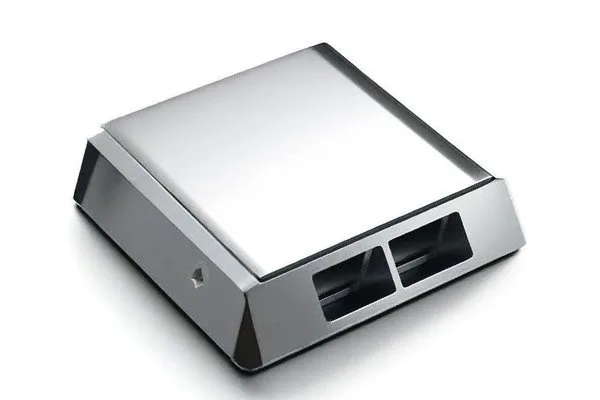In a world where precision and efficiency dictate the success of industries, CNC machining has emerged as a transformative force in manufacturing. From aerospace to automotive and everything in between, the impact of Computer Numerical Control (CNC) machining is profound and far-reaching. But what exactly is CNC machining, how does it work, and why should you consider YL Machining as your go-to partner in this realm? Let’s explore.

—
Definition and Basics
CNC machining is a manufacturing process that utilizes computer-controlled machinery to create precise parts and components from a variety of materials. The “CNC” in CNC machining stands for “Computer Numerical Control,” which refers to the automation of machine tools through the use of computers executing pre-programmed sequences of machine control commands. This technology allows for the scalability and replication of high-precision components in a time-efficient manner.
Historical Background
The roots of CNC machining can be traced back to the 1940s and 1950s when the first numerical control machines emerged. These machines relied on punched tape to guide their operations. As technology evolved, so did the complexity and capabilities of CNC machines, integrating more sophisticated programming languages and controls, leading us to the highly advanced systems we utilize today.
—
The Process Explained
The CNC machining process begins with a digital design of the part that an engineer or designer intends to create. This design is articulated through CAD (Computer-Aided Design) software. The CAD file is then converted into a format understood by the CNC machine, typically through CAM (Computer-Aided Manufacturing) software.
Following this, the CNC machine will utilize various tools to cut, mill, or shape raw material into the desired final product, adhering to the exact specifications outlined in the digital blueprint.
Types of CNC Machines
There are several types of CNC machines, each tailored for specific applications:
CNC Programming Languages
CNC machines operate through programming languages that guide their movements and functions. The most common language is G-code, which consists of simple commands that indicate positions, feed rates, and operational controls. Conversely, M-code is used for miscellaneous functions, such as tool changes and spindle controls.
—
Metals
Plastics
Composites
Composites, such as carbon fiber or fiberglass, are becoming increasingly popular in CNC machining due to their strength-to-weight ratios and resistance to corrosion.
—
Quality and Precision
CNC machining offers unparalleled precision, enabling the creation of complex parts with tight tolerances that are difficult to achieve with manual machining. Each part produced is consistent, reducing the chances of human error.
Efficiency and Speed
The automation of the machining process allows for rapid production, significantly reducing lead times. With the capability to produce parts in high volumes, CNC machining is highly efficient while still maintaining quality.
Cost-Effectiveness
While initial setup costs for CNC machining may be higher than traditional methods, the long-term savings in labor, material waste, and time often outweigh these costs.
—
Aerospace
In the aerospace sector, stringent quality and safety standards are paramount. CNC machining plays a crucial role in producing precision parts that meet these rigorous requirements.
Automotive
The automotive industry relies heavily on CNC machining for everything from engine components to intricate interior fixtures, where precision is critical for performance and safety.
Medical Devices
CNC machining allows for the manufacturing of specialized medical devices and prosthetics, where customizability and precision can significantly impact patient care.
Electronics
With the rise of technology, CNC machining is increasingly used in the electronics industry to produce complex housing and component parts.
—
At YL Machining, we pride ourselves on being at the forefront of the CNC machining industry. Our commitment to quality, precision, and customer satisfaction sets us apart.
Our Technology
Equipped with the latest CNC machining technology, we harness advanced software and high-performance machinery to deliver exceptional results.
Expertise and Specialization
Our team consists of seasoned professionals with expertise across various industries. From consultation to production, we bring a wealth of knowledge that ensures your project’s success.
Quality Assurance Processes
At YL Machining, quality is non-negotiable. Our rigorous quality control processes ensure that every part meets the highest standards.
—
Successful Projects
We have collaborated with diverse clients, delivering solutions that exceeded expectations. One project involved the production of a complex aerospace component, where we employed advanced machining techniques to meet stringent tolerances.
Challenges Overcome
Navigating the challenges of material limitations or time constraints can often arise in CNC machining projects. Our agile approach and problem-solving capabilities allow us to turn these challenges into opportunities, ensuring timely and successful project completion.
—
Trends and Innovations
As technology evolves, so does CNC machining. The integration of AI and machine learning promises enhanced efficiencies, while IoT connectivity will revolutionize how machines communicate and share data.
Sustainability in Manufacturing
Environmental impact is a critical focus for modern manufacturing. CNC machining can minimize waste by optimizing material usage and energy consumption, paving the way for more sustainable practices in the industry.
—
CNC machining is a cornerstone of modern manufacturing, offering precision, efficiency, and versatility that traditional methods cannot match. Whether you’re in aerospace, automotive, or any other industry, partnering with a trusted CNC machining company like YL Machining ensures that your projects are executed with excellence.
In a world where every detail counts, YL Machining stands ready to transform your ideas into reality. Discover the power of precision with us, and let’s build the future together.
—




